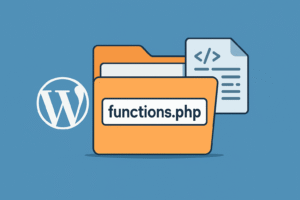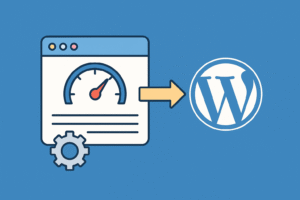WordPress powers over 40% of websites worldwide, making it a popular target for hackers and malicious bots. If you run a WordPress website, securing it is not optional—it’s essential. One security breach can cost you lost data, damaged reputation, or worse: loss of user trust.
In this detailed, beginner-friendly guide, we’ll walk you through the most important WordPress security best practices in 2025. These techniques will help you protect your site from common threats like brute force attacks, malware injections, and spam.
Why WordPress Security Matters
WordPress is secure out of the box, but vulnerabilities arise due to outdated plugins, weak passwords, poor hosting, and misconfigurations.
🔐 According to Sucuri, over 90% of CMS infections in recent years affected WordPress.
Securing your WordPress site ensures:
- ✅ Data protection
- ✅ Better search engine rankings
- ✅ User trust
- ✅ Site uptime and performance
1. Choose a Secure WordPress Hosting Provider
Your host is your first layer of defense.
✅ Look for features like:
- Free SSL certificate
- Daily backups
- Malware scanning
- Web Application Firewall (WAF)
- DDoS protection
Recommended Hosts:
2. Always Keep WordPress Core, Plugins, and Themes Updated
Outdated code is one of the top reasons for WordPress hacks. Always:
- Update WordPress core ASAP after new releases
- Keep all plugins and themes updated
- Delete any unused plugins or themes
Use plugins like Easy Updates Manager to automate this. (WordPress security best practices)
3. Use Strong Passwords and Change Default Usernames
- Never use
adminas your username - Use unique, strong passwords (12+ characters)
- Encourage all users to use 2FA
Use tools like LastPass or Bitwarden to manage secure passwords.
4. Install a WordPress Security Plugin
Top Free Security Plugins:
These plugins offer:
- Login protection
- Malware scans
- File integrity monitoring
- Firewall rules
5. Use Two-Factor Authentication (2FA)
Two-factor authentication adds a layer of protection to your login page. Even if a hacker guesses your password, they can’t log in without a second factor.
Use plugins like:
6. Change the Default Login URL
Most WordPress sites use /wp-login.php or /wp-admin as the login page, making it easy for bots to target.
Use the WPS Hide Login plugin to change your login URL to something like /my-secret-login.
7. Use HTTPS and SSL Certificates
Google prefers secure websites. Having HTTPS:
- Encrypts data
- Improves trust and SEO
- Prevents man-in-the-middle attacks
Most hosts offer free Let’s Encrypt SSL certificates. (WordPress security best practices)
8. Disable XML-RPC (If Not Needed)
XML-RPC is a legacy feature used for remote publishing but can be exploited for brute-force attacks.
Disable it using plugins like:
- Disable XML-RPC
- Or use security plugins that offer this feature
9. Backup Your Website Regularly
Backups are your safety net. Always have:
- Automated daily backups
- Off-site backup storage (e.g., Google Drive, Dropbox)
Top Backup Plugins:
10. Set Correct File Permissions
Ensure your WordPress files and folders have the correct permissions:
- Files:
644 - Folders:
755 wp-config.php:440or400
Avoid setting anything to 777 (full access).
11. Limit Login Attempts
By default, WordPress allows unlimited login attempts. Limit these to prevent brute-force attacks.
Use plugins like:
🔗 Internal Related Articles (on SolveWP.in)
- How to Install a WordPress Plugin
- How to Optimize WordPress with Keywords and Meta Descriptions
- Best SEO Plugins for WordPress in 2025
- How to Create a Custom Post Type in WordPress
External Reference Links
- WordPress Security Best Practices – WP.org
- Sucuri Blog – Security Trends
- OWASP WordPress Security Guide
Final Thoughts
Securing your WordPress site is not a one-time task. It’s an ongoing process. The good news is, by following these best practices, you can protect your site from 99% of common threats.
Use a mix of smart habits, essential plugins, and reliable hosting to create a layered defense.
🔒 Your WordPress website deserves to be safe, secure, and trustworthy. Start implementing these security steps today and keep hackers away.




